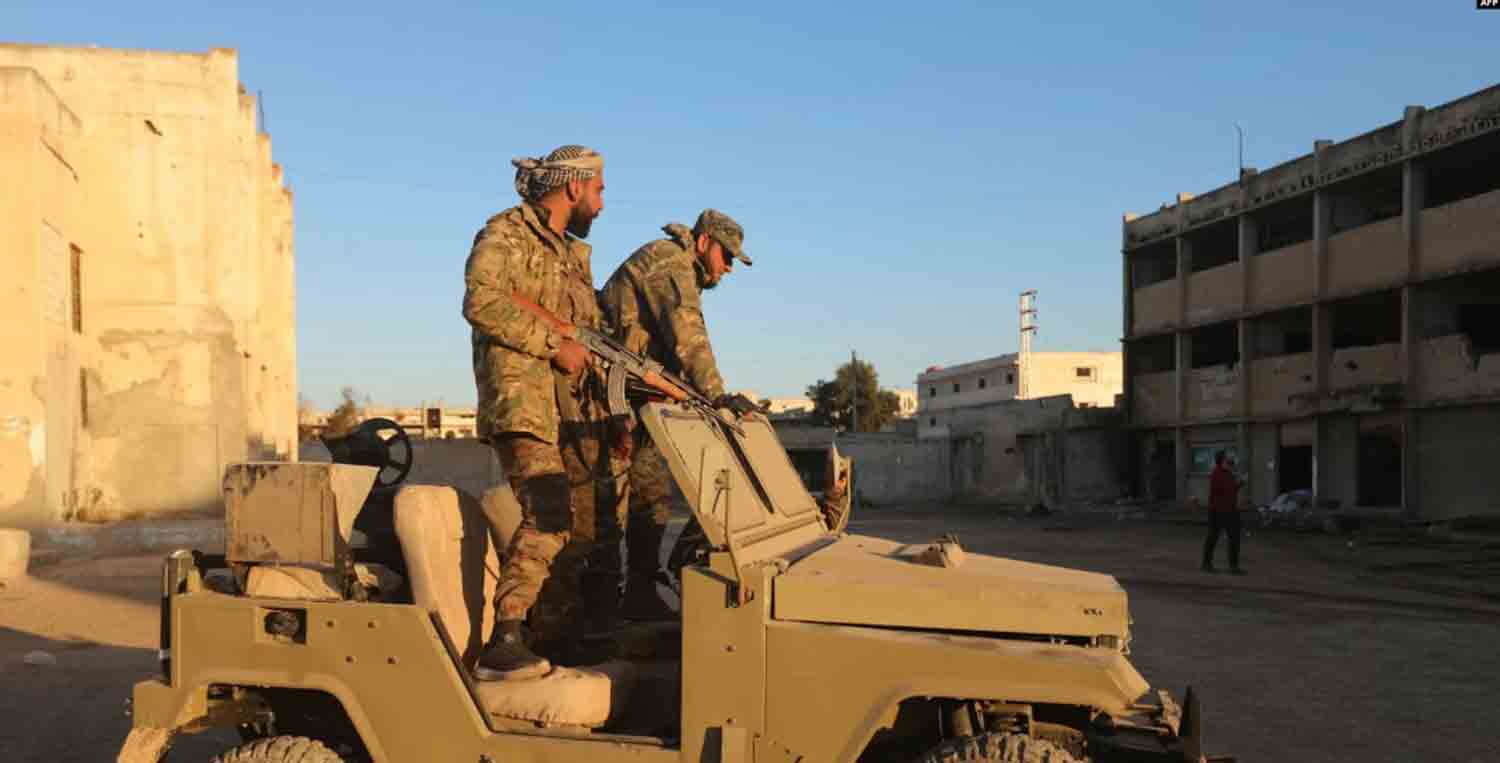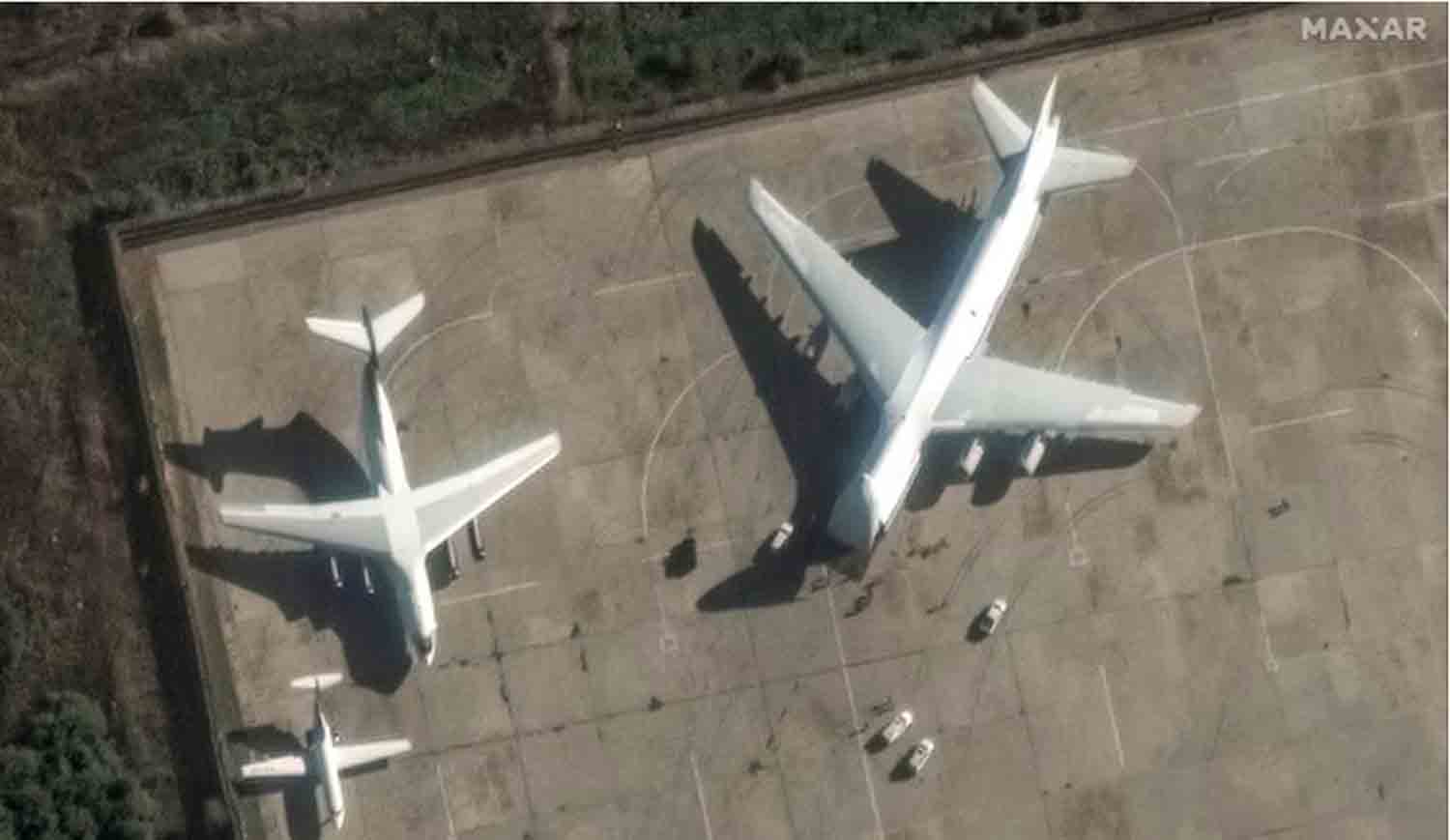Iran’s “Axis of Resistance” included proxy groups based in Syria, established to support the Assad regime as part of Iran’s strategy to enhance its influence throughout the Middle East.
The Fatemiyoun Brigade consisted of Afghan Shiite fighters recruited from Iran, while the Zainebiyoun Brigade was formed by their Pakistani counterparts.
During the peak of the Syrian civil war, these two factions participated in significant battles, aiding Syrian forces in regaining territory from the Islamic State group (IS), notably in Palmyra and Aleppo in 2016, and Raqqa and Deir ez-Zor in 2017.
However, following a recent surge of anti-Assad rebel activity, many members of these groups reportedly abandoned their positions and fled, as indicated by various news reports and researchers monitoring these organizations.
“They collapsed so rapidly that central locations I knew were occupied by at least 1,000 of these fighters were suddenly deserted,” stated Phillip Smyth, an expert on Iranian proxy groups for nearly two decades.
Their current status is unclear, but analysts suggest that Iran is unlikely to disband these groups, especially as Hamas and Hezbollah—other key players in the Axis of Resistance—are currently facing severe challenges from Israeli military actions.
Smyth stated in an interview, “They require forces like this,” in reference to Iran. “They can no longer depend on Lebanese Hezbollah or many other regional allies. Therefore, it seems that they not only need to maintain their operations but will likely have to evolve their strategies.”
Origins
The Fatemiyoun and Zainebiyoun groups were formed during the early stages of the Syrian civil war as the Sunni extremist group IS began to pose a threat to the Assad regime and target Shiite religious sites in Syria and beyond.
The Fatemiyoun was established in 2012 with a small number of Afghan Shiite volunteers, some of whom had previously fought in the Iran-Iraq war of the 1980s and the Afghan civil war of the 1990s, while others were refugees residing in Syria.
Initially, they fought alongside various pro-Assad militias in Syria but became an independent entity in 2013, primarily under the leadership of Iranian military commanders, as noted by Smyth.
The Zainebiyoun, a smaller faction composed of Pakistanis, was originally part of the Afghan Fatemiyoun. However, due to difficulties in collaboration, the Islamic Revolutionary Guard Corps (IRGC) of Iran opted to separate them, according to Smyth.
The involvement of the IRGC in the recruitment, arming, training, and funding of the two militias, despite initial denials, has been widely acknowledged by researchers as an open secret.
To recruit Afghan refugees and migrants, the IRGC employed a mix of incentives and coercive tactics. Undocumented Afghans were enticed with financial compensation and the assurance of legal status. Some individuals were even released from prisons with the promise that their criminal records would be cleared if they joined the Fatemiyoun, as noted by Smyth.
Additionally, there were those who were motivated by religious and ideological beliefs, eager to protect Shiite shrines from IS threats. Many recruits came from religious seminaries in Iran, including Afghans and Pakistanis.
The recruitment campaign also reached into Afghanistan and Pakistan, where Iran-aligned Shiite groups sought volunteers, often facing backlash from local authorities.
Researcher Fakhar Hayat Kakakhel highlighted that numerous members of the Zainebiyoun were drawn from Pakistan’s Shiite-majority Kurram tribal district, the Gilgit region, southern Punjab, and the Hazara community in Quetta.
As the civil conflict escalated and IS gained strength, the numbers within these two groups increased significantly.
In 2015, a news source linked to the Iranian armed forces’ general staff announced that the Fatemiyoun had been elevated from a brigade to a division, indicating a strength of approximately 10,000 to 20,000 soldiers.
Smyth provides a more conservative estimate, suggesting their numbers range from 5,000 to 10,000. The Zainebiyoun, on the other hand, is estimated to consist of around 2,500 to 4,000 fighters, which is about half the size of the Fatemiyoun, according to Smyth.
Role in the Syrian Civil War
Both groups were instrumental during the Syrian civil war, acting as crucial supporters of the Assad regime. Throughout the conflict, they were active in nearly all of Syria’s governorates, as noted by Muaz Al Abdullah, Middle East research manager at the independent research organization Armed Conflict Location & Event Data (ACLED).
Abdullah stated that their objective was “to reclaim areas from IS and subsequently to protect military bases associated with the Syrian government and its allies.” Members of the Fatemiyoun and Zainebiyoun also took part in significant battles in Aleppo and southern Syria, according to Abdullah.
In 2018, a representative from the Fatemiyoun reported that 2,000 of their fighters had been killed and 8,000 had sustained injuries. There are no available statistics regarding casualties among the Zainebiyoun.
Smyth remarked that the Fatemiyoun were frequently utilized as “cannon fodder.”
Smyth stated that if Lebanese Hezbollah needed to be more actively engaged in Lebanon, they could withdraw while leaving some command elements in place to oversee the Fatemiyoun forces, allowing them to remain operational.
Final days of Assad regime
In recent years, as the Assad regime strengthened its grip on much of Syria, the number of militia groups involved in the conflict has decreased. However, even prior to the regime’s potential collapse, estimates indicated that between 2,500 and 5,000 Fatemiyoun and Zainebiyoun fighters were still present in Syria, according to Smyth.
These forces were primarily located in northeastern Syria, with smaller contingents operating in Damascus and occasionally being deployed to Aleppo and other regions, he noted.
As the rebels launched their unexpected offensive late last month, some analysts anticipated a significant confrontation in Damascus, expecting the IRGC and its allied forces to mount a defense of the regime.
Recent videos released by Iraqi militia groups depicted the Fatemiyoun near the Zainab shrine on the outskirts of Damascus.
“Some of them were asserting that these Fatemiyoun intend to remain and protect the shrine. They are not preparing to depart,” Smyth remarked.
Iranian television featured statements from IRGC officials reinforcing their narrative.
They asserted, “do not be concerned, our trained personnel are fighting valiantly,” according to Smyth. “However, I have not observed any supporting evidence. There are no lists of casualties, nor any reports detailing the situation.”
In contrast, anti-government rebels discovered deserted bases and documented their findings on video.
One clip captures an armed rebel inside a former Fatemiyoun base, exclaiming “Khomeini’s pigs” while tearing down Fatemiyoun and Iranian flags. Another video showcases a larger base in Idlib, adorned with the Fatemiyoun flag, featuring looted rooms filled with Persian language posters and signs.
The whereabouts of these forces remain unclear. Iranian officials have not provided any comments, but reports suggest that some personnel were transported back to Iran alongside IRGC troops. Others are believed to have crossed into Iraq or followed retreating Hezbollah fighters into Lebanon.
Smyth theorizes that remnants of both groups may still be present in Syria, waiting for evacuation. However, a return to Afghanistan and Pakistan appears unlikely, as authorities have intensified their efforts against returning fighters.
Discover more from Defence Talks | Defense News Hub, Military Updates, Security Insights
Subscribe to get the latest posts sent to your email.





